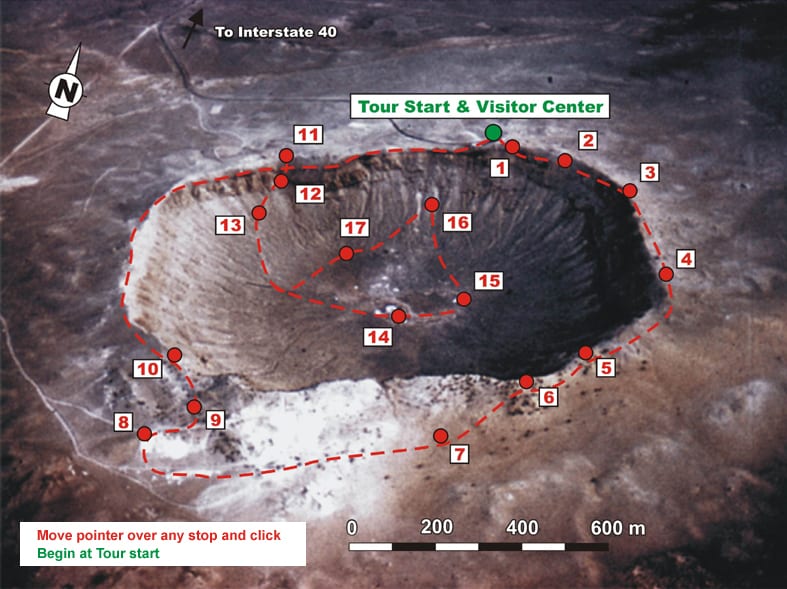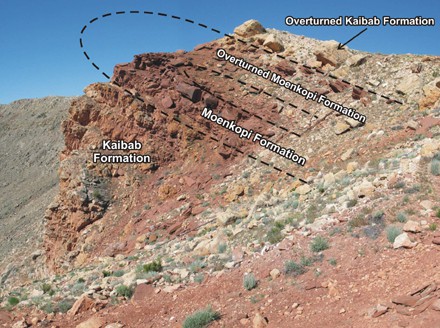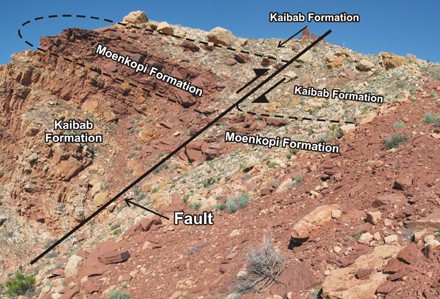
Explorer’s Guide to Impact Craters
Barringer Crater Tour
- Getting to Barringer Crater
- Virtual Tour of Barringer Crater
- Barringer Tour: Visitor Center
- Barringer – Stop 1
- Barringer – Stop 2
- Barringer – Stop 3
- Barringer – Stop 4
- Barringer – Stop 5
- Barringer – Stop 6
- Barringer – Stop 7
- Barringer – Stop 8
- Barringer – Stop 9
- Barringer – Stop 10
- Barringer – Stop 11
- Barringer – Stop 12
- Barringer – Stop 13
- Barringer – Stop 14
- Barringer – Stop 15
- Barringer – Stop 16
- Barringer – Stop 17
Stop 12 at Barringer
As we head down the Caretaker Trail, there are some excellent examples of the structure of Barringer Crater, including the overturned rim and a large tear fault.

View of the overturned rim
Photo: G. Osinski, University of Western Ontario Location: Below the northern rim of the impact crater
Scale:
As at Stop 2, the Kaibab and Moenkopi formations have been uplifted, peeled back, and redeposited on top of each other.

Tear fault in the crater rim
Photo: G. Osinski, University of Western Ontario Location: Below the northern rim of the impact crater
Scale:
Slightly further down the trail, we can see one of the many large tear faults that occupy each of the four corners of the crater which give it its squarish rim shape. As the rim was being overturned, the tear faults formed along fractures called joints that existed in the rocks before the formation of Barringer Crater. On the left side the fault in the above photo, the rocks were uplifted more than on the right side.
